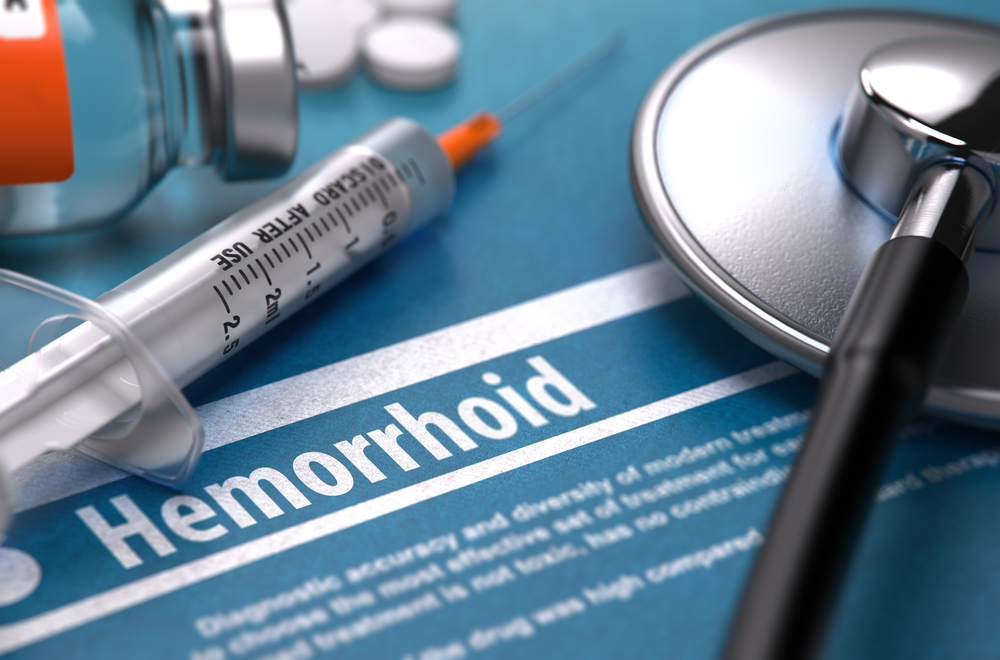Hemorrhoids occur when veins in your rectum dilate and become swollen. Blood pools in the swelling veins, making your veins stretch into your rectal and anal tissue membranes. Often times hemorrhoids can feel quite uncomfortable. While you can’t always see or feel a hemorrhoid, when they fill with blood and enlarge, they can look and feel like a small knob or lump.
Hemorrhoids are extremely common, affecting millions of people across the United States. In fact, the vast majority of people who have hemorrhoids do not even know they have them. While a small number of people have symptoms, an even smaller amount seeks out treatment.
What Causes Hemorrhoids?
While doctors often do not know why certain people end up having hemorrhoids, many people end up with them following an increase in pressure on the veins in the rectum area. Things that may cause this type of pressure include:
- Constipation followed by straining during bowel movements
- Sitting on the toilet for extended periods of time
- Diarrhea and overuse of laxatives
- Pregnancy (when the baby puts pressure on your veins, or while pushing during childbirth), and
- Sitting for extended periods of time during long air flights, road trips, or in office work environments that are highly sedentary.
Hemorrhoids tend to be more likely if you do not get enough fiber in your diet, and if you are overweight. They are also more common with age.
The majority of adults will experience a hemorrhoid at some point in life. While all hemorrhoids are similar, there are some variations. Follow along to learn more about the different kinds of hemorrhoids.
Common Types of Hemorrhoids
1. Internal Hemorrhoids are a type of hemorrhoid that is located inside your rectum. Oftentimes they are not visible, and frequently they disappear without any treatment. Some of the time, an internal hemorrhoid may swell up and when this happens, it may rise out of your anus. When this occurs it is referred to as a prolapsed hemorrhoid.
Many times you do not even know if you have an internal hemorrhoid because there aren’t nerves that identify pain in this part of your body. It may be something that comes to your attention when your physician makes note of it following a colonoscopy or childbirth. If hemorrhoids expand in size, you may experience more symptoms that are typical of larger hemorrhoids. This can include a protrusion that you can actually feel as a soft lump, along with burning, cutting or itching sensations and sometimes severe pain.
When you go to the bathroom, feces passing through your rectal area may agitate internal hemorrhoids which can cause some bleeding that you may see on toilet paper. Please note: Any kind of rectal bleeding can be a sign of other more serious health problems, so it is always advisable to discuss this symptom with your doctor.
2. Prolapsed Hemorrhoid is a term used to describe internal hemorrhoids that have swollen and may appear outside of your anus. This type of hemorrhoid, which appears like a swollen lump, may be visible with a mirror. Some people do not experience any symptoms with prolapsed hemorrhoids, while others
Often physicians are able to assign a grade to a prolapsed hemorrhoid, depending on severity.
- Grade one hemorrhoids are not prolapsed in any way.
- Grade two hemorrhoids are prolapsed but also retract on their own. They may protrude from your anus at certain times like if you are straining during a bowel movement.
- Grade three prolapsed hemorrhoids stick out of your anus and require you to push them back in yourself. It is possible if you are experiencing this, you may want to consider some type of treatment to avoid possible infections and/or to limit discomfort.
- Grade four hemorrhoids are large enough that you cannot easily manually push them back into your anus without a significant amount of pain and discomfort. In these cases, it is highly advisable that you consult with your physician to explore treatment options.
3. External Hemorrhoids appear on your anus. You can’t always see them, but if you are able, they tend to appear like lumps. External hemorrhoids are typically not a serious issue, unless they cause you discomfort that negatively affects your daily life. The symptoms of external hemorrhoids tend to be similar to other types, including pain while going to the bathroom – especially if straining, doing certain activities, and sitting (especially on hard surfaces) for prolonged periods.
4. Thrombosed Hemorrhoids can cause people a lot of discomfort. This type of hemorrhoid contains a thrombosis or a blood clot within the tissue of the hemorrhoid. They often look and feel like small lumps around your anus. Thrombosed hemorrhoids are complications associated with hemorrhoids where blood clots appear. They can happen with both external and internal hemorrhoids, though more commonly with external. If you are experiencing one, you may have difficulty sitting, walking or going to the bathroom without discomfort. You may also notice redness along with a blue color around the hemorrhoid area.
If you are experiencing discomfort from hemorrhoids, the experienced team of medical professionals at Gastroenterology Health Partners is here for you using the most advanced treatment options available. For more information or to schedule an appointment, contact Gastroenterology Health Partners today at a location near you.


